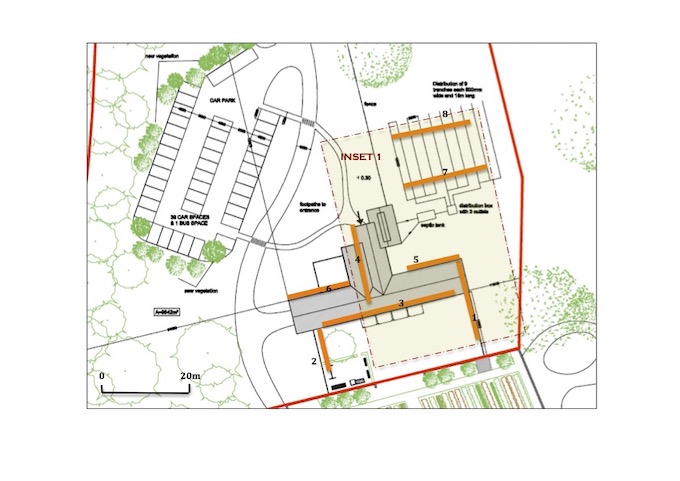County: Kildare Site name: Burtown House, Burtown Little
Sites and Monuments Record No.: N/A Licence number: 16E0049
Author: Ruth Elliott
Site type: Post-Medieval/Medieval
Period/Dating: —
ITM: E 675714m, N 694646m
Latitude, Longitude (decimal degrees): 52.997181, -6.872101
Archaeological testing, a condition of planning permission (15/570), was carried out between the 10th and 12th of February 2016 on the site at Burtown Little, Co. Kildare. The site lies within the grounds of 18th century Burtown House, where a visitor centre development is proposed. The development area lies outside the walled garden in parkland landscaped in the style of Capability Brown. Eight test trenches were opened to determine the impact of the proposed development on potential archaeological material. The stratigraphy was characterised by a deep layer of topsoil, built up significantly in some areas during the parkland landscaping. A number of features were revealed, mostly indicative of land drainage and cultivation. These comprised a series of ditches, gullies and plough furrows, particularly in the north and northeastern parts of the development area. The majority of these followed the same orientation and one produced a sherd of Post-Medieval pottery. All predated the first edition Ordnance Survey map of 1838, which shows this area already landscaped and former field divisions removed. However, a stony layer in Trench 1 may have represented the remains of a track visible on the 1838 map running outside the walled garden in the location. Four earlier, archaeological features were uncovered within Trench 7 in the northeastern part of the site. One of these was a ditch (C30), orientated slightly differently to the other drainage features. Two pieces of iron slag were retrieved from this. Four sherds of Medieval pottery were found within two of the other features (C32 and C42). All features lay beneath proposed development levels and were not subject to further impact. As such, all material was preserved in-situ.

Ruth Elliott, 47 White Castle Lawn, Athy, Co. Kildare